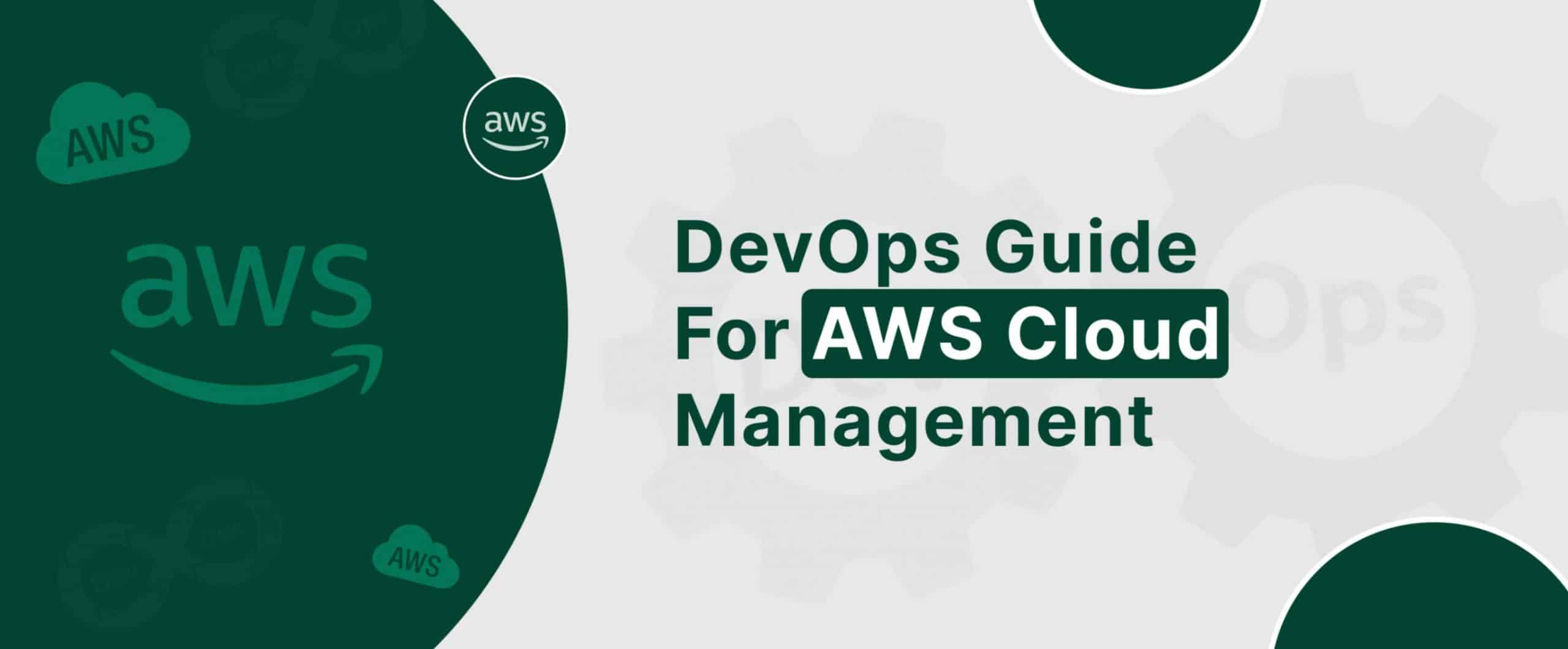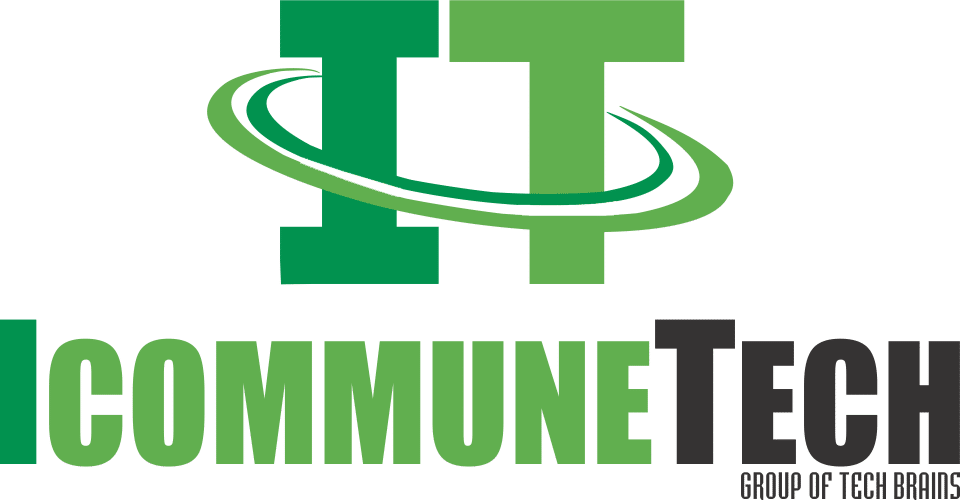DevOps Guide for AWS Cloud Management

Hello there! If you’re wondering about AWS Cloud Management, you’re in the right place. In this post, I’ll walk you through some awesome AWS DevOps tools and best practices that make managing your AWS environment a breeze. Trust me, mastering these techniques can really boost your cloud game! 🚀
Before we dive into the guide, let us learn some interesting facts about AWS Cloud Management:-> According to Spacelift, 96% of respondent companies use the public cloud. 84% of respondent companies use private cloud services.
-> Among the leading cloud service providers across the globe, Amazon remains the most prominent public cloud service provider, with 32% of the market share.
-> It is believed that the cloud computing market is forecast to be worth $947.3 billion by 2026. Looking at these trends towards adopting cloud services, we were inspired to write a post on cloud management, which remains a crucial aspect of most company economies.
Why AWS (Amazon Web Services)?
There are obvious reasons for choosing Amazon Web Services over other cloud service providers. For instance:
- Free-tier service is available for a particular time to get used to and better comprehend the service.
- You’ll use the pay-as-you-go pricing model, which is the on-demand model.
- AWS is the most reliable, flexible, and secure cloud platform for businesses across the globe.
- AWS offers fast-paced innovations through adopting the latest cloud technologies.
- AWS has the most comprehensive partner network and locations to spread its services globally.
What Is Cloud Management?
It is about control and oversight of an organization’s infrastructure, services, and apps running on the cloud. Cloud resources need to be configured and systematically managed to achieve maximum security, efficiency, and cost. Therefore, cloud management encompasses policies, strategies, and technologies to control and maintain private, public, or hybrid cloud resources.
Why Should We Focus on Cloud Management?
Efficient cloud management comes with several advantages, such as:
- Ease of use
- Centralized cloud governance.
- Cost and capacity control.
- Automated incident response.
- Multi-cloud management.
Contact Us now!
AWS Management Tools
AWS ecosystem offers a plethora of native & third-party AWS management tools. For the sake of better understanding, we have categories for those tools in the following ways.
#1 – AWS Application Performance Management (APM) Tools
These tools enable organizations to diagnose performance issues in productivity, revenue-generating apps, and parts of applications that affect UX. Those tools or platforms are:
-> AppDynamics
It’s Cisco’s robust APM platform for AWS apps. It consists of Docker and Microservices. It’s integrated with AWS CloudWatch. So, it can support EC2, Lambda, S3, DynamoDB, and SQS.
Thus, you can track app performance changes before, during, and after migration. AppDynamics provides excellent root cause analysis to reveal hidden problems in the app within minutes rather than spending hours.
-> DataDog:
The tool offers one-click access to data from nearly 70 AWS. It allows you to analyze all traces in real time for the last 10 minutes. It lets you keep high latency traces and errors for up to 15 days.
#2 – Continuous Performance Optimization Tools
These solutions use AI and ML (Machine Learning) technologies to optimize resource usage, infrastructure processes, and application performance using the following options.
-> Opsani:
It uses ML algorithms to improve workload tuning by identifying apps for the best performance. It allocates resources dynamically in real time. It continuously works in the infrastructure upgrades, load profile changes, and code releases without affecting the app performance.
-> Spot.io:
It uses AI and ML both. It prevents overprovisioning. Thus, it prevents cloud waste. It assists companies of different sizes to achieve this by automatically selecting the most efficient AWS models and instances for the job for your organization. It can run cheaper Spot instances against costly on-demand instances.
#3 – Network Management on AWS Tools
You can manage network performance after identifying failures in the network and slow components, including routers, servers, and switches. The insights into these can help to design appropriate fixes in the network and improve overall network performance. In due course, the following tools can help in AWS management.
-> Nagios Network Analyzer:
It offers network monitoring and alerting capabilities for services, switches, servers, and apps. It helps you detect problematic traffic sources, potential threats, and other network health insights. You can analyze bandwidth utilization based on various combinations, such as by IP or source.
-> Splunk:
It has acquired FlowMill to boost its cloud network performance and observability capacity. When you need network maps, real-time performance metrics, root cause analysis, automatic discovery, intelligence altering on one platform, and scalability, Splunk is an ideal choice.
#4 – AWS Cost Optimization Tools
A cost-conscious engineering team always creates cost-effective solutions. Therefore, AWS presents several cost-effective tools for clients and companies. For instance,
-> CloudZero:
It optimizes cloud cost without affecting innovation. It enhances UX without exceeding the budget. The tool helps the finance team to understand unit costs to inform business decisions. It answers questions such as how to price different tiers, which features should be included in each tier, and what and who is driving their cloud spend and why. It translates cloud metrics into actionable cost insights that connect to your daily business activities.
It collects, enriches, and reports accurate cost insights for tagged, untagged, and other resources on AWS. It offers cost anomaly detection and alerting.
-> Amazon CloudWatch:
You can access it in the AWS Management Console dashboard to monitor AWS resources and understand how to use them. It issues alerts about abnormal cost activity, checks application usage, and accumulates custom metrics.
#5 – AWS Security & Compliance Tools
It protects customer data and business secrets. It protects the integrity and accessibility of data during processing, transmission, and storage. AWS offers native security tools, including IAM, AWS Config, AWS Shield, AWS Security Hub, AWS CloudTrail, etc. Let’s learn about two more advanced tools
-> CloudHealth:
It uses custom policies and rules to provide real-time security insights in typical and multi-cloud environments. It gives visual context and quantitative risk resources to prioritize responses to threats. It issues security alerts and collaborates with distributed teams to resolve issues before they leave impacts on customer experience (CX).
-> Dynatrace:
It is a full-stack cloud management platform that offers robust security applications. It combines infrastructure, application, and automated runtime to identify vulnerabilities in the cloud environment. It provides a root cause approach to detect, track, and remediate security issues in the Kubernetes environment.
#6 – AWS Enterprise Cloud Governance Tools
These tools enhance efficiency and minimize risks in a cloud environment. You will need cloud governance tools when you work with multiple cloud resources, teams, and technologies. These tools are:
-> SolarWinds:
It provides end-to-end cloud governance to manage the cloud environment. It accumulates data across every area of the cloud and applies it to develop policies and controls to ensure high security, cost efficiency, and high performance.
-> CoreStack:
It can harness the power of the cloud with AI/ML capabilities. You can use it to plan and allocate resources, secure environments, and achieve compliance.
Another Topic Which might interest youEssential AWS DevOps Skills for Cloud Success!
AWS Hierarchical Storage Management
To use storage media economically, HSM (Hierarchical Storage Management) is the way to manage data files based on defined policies. HSM automatically moves data among different storage tiers. It can be in a standalone system or distributed enterprise network.
On the one hand, HSM consists of a high-performance tier, which typically has more expensive devices. It includes SCM (Storage Class Memories), enterprise-grade fresh solid-state devices (SSDs), and HDDs (High-performance Hard Disk Devices).
The other end is slower and has less expensive devices, including optical disks, tape systems, etc. This tier is helpful for data archives and cold data. However, other tiers fall in between these two extreme tiers.
Possible Tiers Used in HSM:
- Mission-critical Data: It’s used with high-performing workloads that can’t tolerate delays.
- Hot Data: It is used on a continuous basis to support ongoing operations.
- Warm Data: It is accessed less frequently but is needed regularly.
- Cold Data: Data that is seldom accessed.
Advantages of HSM:
- Performance optimization.
- Cost-saving
- Efficient resource usage
- Capable of taking backups
HSM Products:
- IBM Spectrum Protect
- Hewlett Packard Enterprise Data Management Framework
- Quantum StorNext
- Zimbra
AWS IoT Device Management
Internet of Things (IoT) device management refers to the processes handling the lifecycle of IoT devices and sensors from planning to monitoring and maintenance up to retirement. The IoT device management tools enable you to connect and configure any number of IoT devices and their data. You can monitor devices’ status, handle security, and keep IoT solutions aligned with your IoT strategies.
Therefore, the IoT device management platform is capable of onboarding and registering devices. They monitor information on the devices, such as location and status. They take firmware updates, manage devices at scale, troubleshoot, perform security maintenance, and integrate data with other devices/systems in the organization or network.
Advantages of AWS IoT Device Management:
- Streamline the process to update and change devices.
- Enhance the dependability and stability of IoT devices.
- Maintain high security.
- Adapt to fast-changing business models.
- Manage from cloud to edge.
Best Practices for Effective AWS Cloud Management
- Embrace IaC (Infrastructure as Code).
- Implement robust monitoring and logging using suitable tools.
- Automate everything using AWS automation tools.
- Optimize costs.
- Improve AWS cloud security.
- Implement disaster recovery and high availability.
Advanced AWS Management Techniques for DevOps
- Use serverless architecture.
- Apply containerization.
- Use CD/CI pipeline integration.
- Use ML Ops.
- Leverage Edge Computing.
What is Version Control in DevOps?!
Wrapping It Up
Successful DevOps practices depend on AWS cloud management. We have seen nearly a dozen AWS cloud management tools and learned about implementing AWS hierarchical storage management. We also learned about AWS IoT management to cope with the latest challenges.
Hope you liked this guide, if you did, then do not forget to share this guide with your colleagues and fellow developers.
If you are looking for a talented AWS cloud management team for your organization, iCommuneTech is just the right place for you. Our team provides DevOps services for competitive rates, and many other advantages. Let’s have a phone call with our team to learn more about our offerings.
Nazim Ghori

E-commerce and DevOps Specialist
Nazim is an expert in providing e-commerce platforms and DevOps solutions at iCommuneTech. He focuses on automation technologies, deployment pipelines, and ensuring that digital products are market-ready. Under his mentorship, a DevOps team at iCommuneTech is flourishing. He also empowers readers to gain in-depth knowledge about various technologies.
